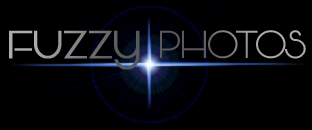| Image Links | |
| Published image | Full resolution |
| Annotated | Full resolution |
| Target Information | |
| Main Target Designation(s) | Total Solar Eclipse, 73% Umbral Depth |
| Companion Target(s) | Regulus, ν Leonidis |
| All Exposures | |
| Date(s) of acquisition | 2017Aug21, 18:24:30 - 18:27:05 UT |
| Location | Hopkinsville, KY |
| Capture resolution | 4608x3456 |
| Exposures | |
| Widefield HDR Source (200mm) | 4 x 1/10s 2 x 0.62s 2 x 1s 2 x 2s 2 x 3.2s 1 x 4s 1 x 8s |
| Center HDR Source (800mm) | 5 x 1/3200s 5 x 1/500s 5 x 1/250s 4 x 1/125s 4 x 1/60s 3 x 1/30s |
| Widefield Image Train | |
| Imager | Olympus E-P5 |
| Telescope/Lens | Panasonic Lumix G Vario 45-200mm f/4.0-5.6 |
| Focal Length | 200mm @ f/5.6 |
| Mount Style | Piggybacked Ball Head |
| Focusing | Manual / Focus Ring |
| Center Image Train | |
| Imager | Olympus Air A01 |
| Telescope/Lens | Orion 8" f/3.9 Astrograph |
| Focal Length | 800mm @ f/3.9 |
| Mount Style | Dovetail |
| Focusing | Moonlite CR with V2 High-res Stepper |
| Additional Equipment | |
| Mount | Celestron CGEM (DIY Hypertuned) |
| Collimator | Howie Glatter 650nm laser |
| Acquisition | Custom Python Sequencer |
| Processing | PixInsight 1.8, Photoshop CC |
It's taken nearly 7 months, but at long last I've been able to tame the solar eclipse data I captured on August 21, 2017 from my "wider field" Panasonic lens at 200mm. The result is a splendid combination of how I recall the eclipse looking along with a successful effort to expose some of the outer extents of the corona.
Though the data was a bit soft due to focus, I was eventually able to recover outer eclipse detail and restored the center corona, prominences, and moon with the data I had from my Newt. There are many new things to enjoy in this view as compared to my prior post with the inner corona detail:
- Though I had already run through processing for it in the Newt's 800mm view, the prominences here come across in a much more accurate fashion as I recalled with my eye. The sizzling pink color combined with the size at this focal length hearkens back to that afternoon's biggest surprise when I thought my eyes had played tricks on me.
- This view also bestows some deeper space surprises. In addition to the bright star Regulus at the left of the frame, another sparkle in Leo appears to the right with the binary star system ν Leonidis. Shining in our sky at a magnitude of 5.35, this is really quite an accomplishment for a daytime capture and speaks to the atmospheric darkening the solar eclipse imposes. Both stars are designated in the annotated image.
- Lastly, thanks to a "modest" 8s exposure at f/5.6, we can trace coronal vestiges out to a whopping 6 solar radii! Though the corona extends further than this, this exposure of the streams' incredible reach is another surprise accomplishment in what was otherwise a "let's just try it out" set of exposures.  The solar radii distances are designated on 3 different streams in the annotated image.
Composing this data in a way that eliminated HDR combination artifacts ("onion rings") was the biggest challenge. These artifacts are often present in many photographs of the event, and they are nearly a fact-of-life when composing these images. However, through a 3-stage combination process, I was able to nearly eliminate them, a characteristic that I think really adds to the realism of the image.
- For the outer 200mm data, I combined with a no-rejection integration using maximum combination and multiplicative scaling normalization between frames.
- For the inner 800mm data, I combined with a standard HDR combination in PixInsight
- For a combination of the 200mm and 800mm HDR data, I used the mean-stacking method in Photoshop CC, which produced a very pleasing blend between the regions
After achieving a good combination, I knew I would have an image to work with. Wavelet processing in PixInsight with the Multiscale Linear Transformation and further sharpening with the Smart Sharpen filter in Photoshop CC represented a processing tandem that produced an outstanding coronal representation while bringing out the fringes. Some iterative saturation and histogram adjustments to taste were then all it took to accomplish a competing image to my alternate view.
Even though it's taken so long to bring this data to fruition, it's not without the side benefits of reliving this marvelous event and reigniting my excitement to catch another one in the future. Looks like I'll need a wider lens on another setup next time!

